Trash Bins
Buyer’s Guide for Trash Cans
Every time people congregate, they need a location to dispose of their rubbish. When finished with their picnic, people need a place to discard their old plates and food scraps. Attendees of sporting events or concerts require a place to discard their used cups and cutlery.
No matter if you are in charge of an amusement park, stadium, or public park, having adequate garbage cans is essential to maintaining the space’s appearance and lowering the likelihood of a pest infestation. Having enough trash cans available to people also helps to cut down on litter.
Along with having an adequate number of garbage cans, it’s crucial to pick containers that fit your surroundings. This buying guide will show you how to pick trash cans to motivate people to dispose of their waste in the proper location and to maintain a public outdoor area’s attractiveness.
Various Types of Garbage Receptacles
- Waste Container Materials
- Material Selection Considerations
- Lids for trash cans
- Selecting the Best Trash Receptacle Type for Your Business
- Pick Your Garbage Can at Wabash Valley Furnishings
Styles of Garbage Cans
Consider a number of factors when selecting garbage cans. Consider the purpose the bin will serve first. Next, think about the receptacle’s shape and size, or the size of the space you’ll be placing it in.
Trash cans should be functional first, but form is important as well. You want to make style selections that go well with the overall aesthetic of your outside space.
Purpose
Not all trash is created equal. While other goods must be disposed of in landfills, some can be given a second life through recycling. Provide a variety of garbage cans to make it simple for guests to organize their waste. Several choices include:
- Outdoor garbage cans: Outdoor garbage cans come in a variety of sizes and materials, as well as a variety of hues and shapes. The containers gather waste, including food wrappers, food scraps, and other items people decide they don’t want to keep. Outdoor trash cans are typically composed of hardy materials that can survive exposure to wind, rain, and extreme temperatures.
- Outdoor recycling bins: It’s a good idea to provide folks a chance to separate recyclables from their garbage if you recycle. Plastic or glass bottles, metal cans, and newspapers are all examples of recyclable materials. It’s frequently a good idea to place a recycling container next to a garbage container and clearly mark each one.
- Ash urns: Even though many places have smoking bans, if yours hasn’t, it’s a good idea to provide smokers with a secure location to discard their cigarette butts. Cigarette butts continue to be the most often found littered materials even though the number of smokers is dropping. Giving smokers a place to drop their cigarettes keeps the area looking neat and lowers the risk of a fire. Ash urns are the ideal container.
Size and Shape
There are many different sizes and shapes of trash and recycling containers. The largest capacity, such as 32 or 55 gallons, makes sense if you’re purchasing garbage cans for a location with a lot of foot traffic. A smaller capacity, like 10 or 22 gallons, can be adequate if you’re installing multiple garbage cans in the same spot, like next to benches at a playground or surrounding a baseball pitch.
Your choice of size ought to take into account how often you empty the garbage cans. It may be necessary to empty smaller dumpsters more regularly than bigger ones. People frequently pile their trash around trash cans that are too full, which detracts from the attractiveness of your place and can result in bug issues.
When selecting garbage cans, keep the following in mind as well:
- Round vs. square: The shape of your garbage cans is a matter of both beauty and functionality. It will take up less room to arrange numerous bins in a row if they are square or rectangular rather than round. However, others think that round shapes are more aesthetically beautiful than square ones.
- Flat top vs. lidded: The contents of a flat top trash can be totally exposed or protected from the elements with a rain hat. A trash can with a lid could have an opening that needs to be pushed open. Push-open lids may not be used by some people because they believe them to be unclean. Flat top trash cans may be simpler to operate, but if the bin is too full, waste may fall out or begin to pile up.
- Pole vs. surface mount: Receptacles installed on poles often have a much smaller footprint. Additionally, they need poles, like a lamppost or a street sign. To stop theft, surface-mounted trash cans can be fastened to the ground. They may be perfect for regions with more pedestrian activity.
- Slats vs. perforated: Much like square vs. round, the choice between slats and perforated is primarily ornamental. Think about the other furniture styles you’re utilizing and how the garbage cans fit in with those.
- Tapered vs. straight: Tapered garbage cans have a thinner base and may be more likely to topple over in high winds. In order to avoid that, mount them on a surface. Straight bins often have a larger interior capacity and footprint. The choice between straight-sided and tapered sides is largely one of taste. Select a design that works well with the other furniture in the space.
Materials for Trash Cans
A material that can survive all weather conditions must be used to make outdoor trash cans. The lifespan of the garbage can increases with the amount of weather resistance of the material.
Consider the material’s appearance as well as whether it fits with the general aesthetic of your company. Several alternatives are:
Metal with a Powder Coat
Metal is a strong, long-lasting material that, with proper maintenance, can survive for many years. Certain types of metal can rust when exposed to water, which is a downside.
Steel and other metals receive an additional layer of protection from powder coating. In the powder coating procedure, a mixture of electrically charged resin and finely powdered pigment is sprayed onto metal. The coating offers a visually beautiful and long-lasting protective finish.
Metal garbage cans with a powder coating require little upkeep. They can withstand wind, extreme heat or cold, corrosion, and other types of bad weather.
Powder-coated metal comes in a variety of colors, including blue, red, green, and silver. Powder coating often produces a finish that is fade resistant since the pigment and resin are blended together. Even after years of use, your garbage cans will still appear clean and pristine.
Coating with Plastisol
Powder coating and plastisol coating share certain similarities. It aids in strengthening and improving the weather resistance of metal. Additionally, it comes in a variety of colors and perforation styles.
Plastisol is created from polyvinyl chloride, whereas powder coating is made from resin and powdered pigments (PVC). It is a liquid when it is room temperature. When heated and given time to cure, it becomes a substance that resembles rubber.
Plastisol resists rust, corrosion, chips, and UV rays in addition to all of these other things. Due to its durability, it is a great option for usage in outdoor settings, playgrounds, and any other location where a garbage can might be kicked or smacked.
Faux Wood
Faux wood is a great alternative to real wood, which is typically a bad material option for outdoor garbage cans. In most cases, recycled materials are used to create faux wood, which is intended to seem like real wood. Faux wood may be the finest material for your garbage cans if you want to achieve a rustic vibe.
Faux lumber is not porous like genuine wood, so it won’t rot or become infested with mold and mildew. The material is extremely simple to maintain. It is also UV-resistant and wind- and rain-resistant.
Plastic
Another material for trash cans is plastic. Plastic can be strong and water-resistant. The type of plastic used may not be UV-resistant, in which case a garbage can’s color may deteriorate over time when exposed to sunlight.
Due of its tendency to be solid, plastic trash cans may not allow liquids to drain away from the garbage, which is a negative.
What to Think About When Selecting Materials
When selecting materials for your garbage cans, consider the weather and the behavior of the public. Powder-coated or Plastisol-coated bins may be your best option if your area has heavy annual precipitation or snowfall because of their superior water resistance. Although they cannot survive rain and dampness as well as powder- or Plastisol-coated materials, faux wood and plastic can.
The amount of touch the bins will have with humans is something else to think about. Receptacles for a play area or sports field will probably take a lot of abuse from children or balls running into them. Look for garbage cans that can endure high temperatures or that won’t melt if you want to place them next to barbecues or bonfire pits.
Additionally, appearances are important. Some materials have a greater variety of color options than others, such as coated metals. The material you select has an impact on the overall design of the trash can.
Lids for trash cans
When selecting garbage cans, it’s crucial to consider whether or not they have lids. The presence or absence of a lid may have an impact on how frequently individuals utilize the garbage can. Additionally, lids can provide some weatherproofing.
The following are some possibilities to consider:
Top Flat
A trash can with a flat top, sometimes referred to as a pitch in design, lacks a top cover. People can easily toss their trash in the bin as they pass by thanks to the design.
A flat top lid style also has the advantage of being seen as more hygienic than other lid forms. Because it is a touch-free trash can, perhaps more people will use it.
The flat top type has the disadvantage of leaving the bin entirely open. Pests like squirrels can access the trash and rummage through it in search of food. The trash can fly out of the bin on a windy day, and it can get wet from rain if it rains. There’s also a danger that too many individuals may use the trash can, filling it to the brim with trash.
Top Dome
Dome top lids have a spherical top and a flap that must typically be pushed open in order for trash to be placed within the container. The lid type prevents bugs from getting into the trash and keeps it tightly sealed. Dome tops can help stop the wind from blowing trash around and protect the container from the rain.
However, due to hygienic issues, some people might be reluctant to use a garbage can with a dome on top. If people choose to throw their trash on the ground, that could result in higher instances of littering.
Dome-topped lids may need more regular cleaning than other alternatives because they are touched more frequently.
Top with hood
A dome top and a hooded top lid are comparable. However, the lid is open on two sides rather than having a flap that users must press to place their waste in the bin. The finest of all worlds can be found in a hooded top lid. Like a flat top, it makes access simpler. It also shields the trash can from wind and water.
The hooded top lid type has the disadvantage of not keeping vermin away from the trash. The aperture allows a squirrel to enter the trash can.
Rain Bonnet
A rain bonnet can be compared to a particular style of headgear for a trash can. It keeps watch over the bin’s opening while still allowing access from all directions.
A rain bonnet offers some wind protection while preventing debris from getting wet during a downpour. However, it won’t stop bugs from accessing the trash.
Ash Bonnet
Smokers now have a place to put their cigarette butts other than the ground or the garbage can by using an ash bonnet. Sand or a material that resists fire can be used to fill the ash bonnet. Getting individuals to stick their butts in the ash bonnet decreases the likelihood of a rubbish bin fire.
If smoking is authorized where you are, then you must take into account a container with an ash bonnet.
Tray Bonnet
A tray bonnet lid gives patrons a place to put their trays back after finishing their meals whether you run a restaurant with outdoor seating or an amusement park with a dining area. Reusable trays are kept out of the trash thanks to the hat. It also prevents water from getting into the trash cans.
The Best Trash Receptacle Types for Your Business
When picking garbage cans, there is no one size fits all solution. Your company may profit from selecting a single model of trash can for usage everywhere or from selecting many types to suit various locations. For instance, you might select one design for a picnic area and another for a playground.
The location of the trash cans, the local climate, and how people will utilize them can all have an impact on your choice.
The location of the trash cans
The kind of garbage cans and lids you select for them are influenced by where they will be placed. Protecting the trash from rain or other factors is less of a worry if the containers are placed in an outdoor area with a covering, such as beneath an awning or pavilion. In that situation, you might be more inclined to select a flat top trash can.
However, if the trash cans are in a dining room or an open location, going with a dome top lid might be your best option. The cover will prevent odors from escaping the bins and will keep out rain and bugs as well.
A flat top lid style trash can can make sense for an area with a lot of foot activity, such as a path through a park, a promenade at a sports stadium, or an amusement park. People won’t have to stop or slow down to empty the garbage can this way.
The location has an impact on the containers’ appearance as well. You might decide to place coated metal bins in energetic, kid-friendly hues on a playground. A faux wood bin can improve the rustic atmosphere at a campsite.
Utilization of the Garbage Cans
The types you pick depend in part on how people will use the trash cans. If smoking is permitted at your place of business, installing ash bonnets over the trash cans or placing a few ash urns about will assist reduce cigarette litter.
A tray bonnet may be a wise choice if you’re looking for garbage cans for a restaurant. A solid-material container with a dome top lid, rather than one with an open design, can also be a suitable choice if you’re worried about scents.
Additionally, think about if your company recycles. If so, it would be a wise decision to place recycling bins adjacent to the garbage cans. To encourage individuals to place their recyclables in the appropriate bin, provide as many recycling containers as trash cans. The containers should be clearly labeled so that people know which is for recycling and which is for rubbish. It’s also a good idea to use contrasting hues, such a green or blue recycle container.
Weather Circumstances
Your choice of trash containers may be influenced by the local weather conditions. Choose robust receptacles you can surface mount or attach to a pole if your company is located in a region that experiences a lot of wind and rain. Additionally, use materials that won’t rust or degrade in moist or humid environments.
The longevity and condition of your trash cans can both be impacted by sunlight. To avoid fading or other damage if you’re placing the trash cans in a sunny location, seek for a material that offers UV protection.
Foot Traffic
When selecting receptacle sizes, take into account the daily flow of customers into and out of your establishment. Smaller bins may be adequate if there is little foot activity. However, if a lot of people come and leave and there is a lot of waste, the larger the trash can, the better. With a larger bin, there is less likelihood that it will fill up before a worker can empty it. Larger dumpsters also need to be emptied less frequently per day, freeing up your employees to work on chores that are more urgent.
Total number of trash cans
Generally speaking, the more garbage cans your business has, the better. If access to a garbage can is simple, people are less likely to litter. Trash cans are ideal in the following locations: Outside of gates; On corners; Next to picnic tables or other eating areas; Next to benches
The distance between trash cans at your place of business should ideally be no more than 10 to 25 feet. A person is more likely to drop a piece of trash the further they have to travel while carrying it.
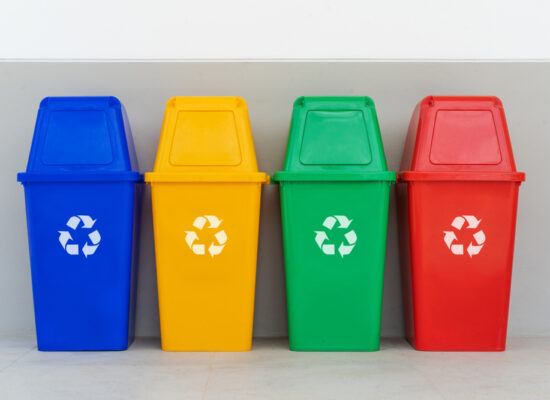
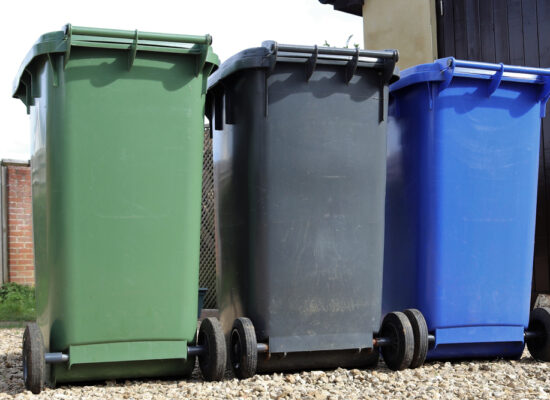
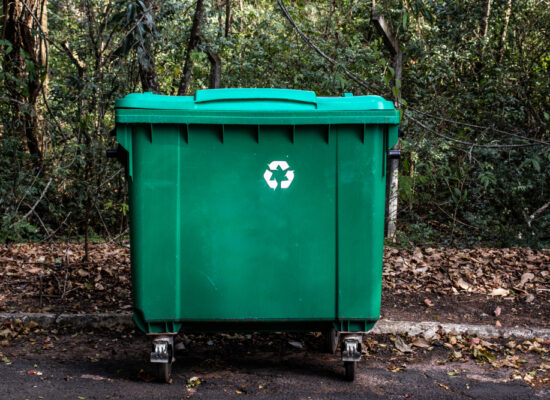
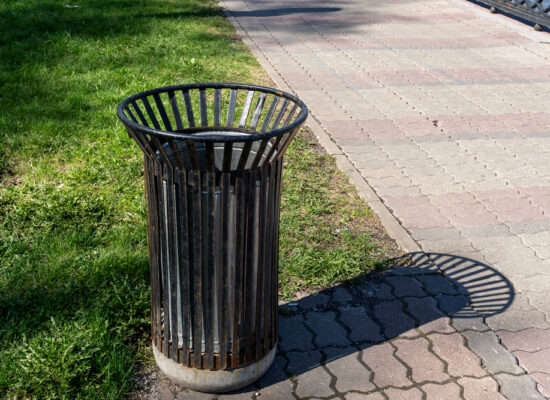
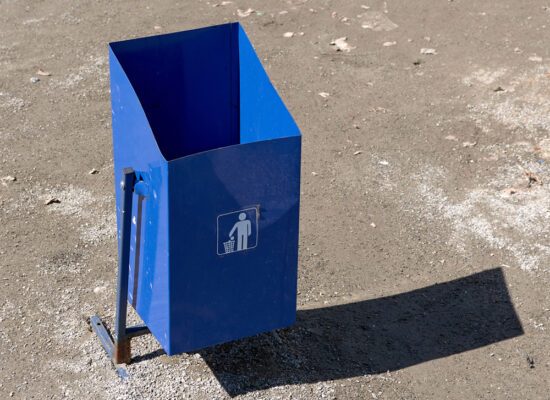
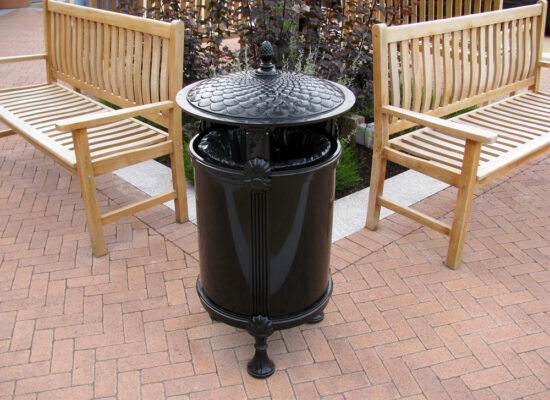
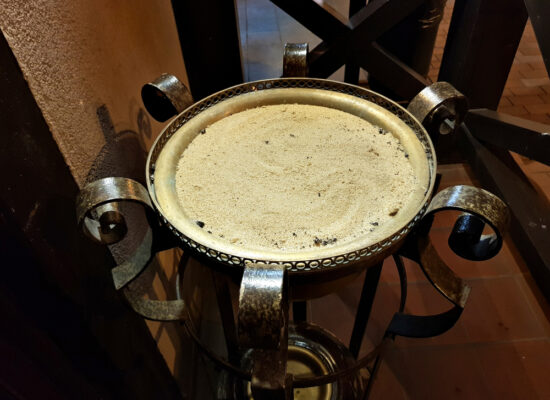
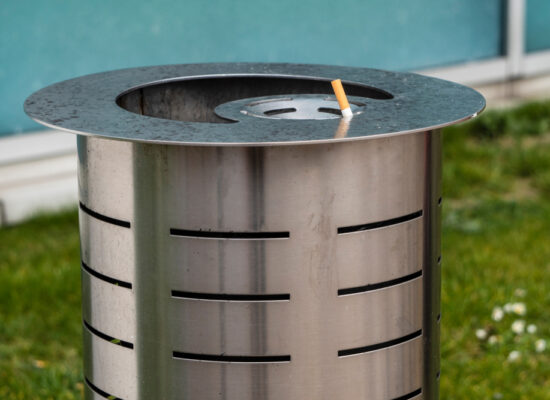
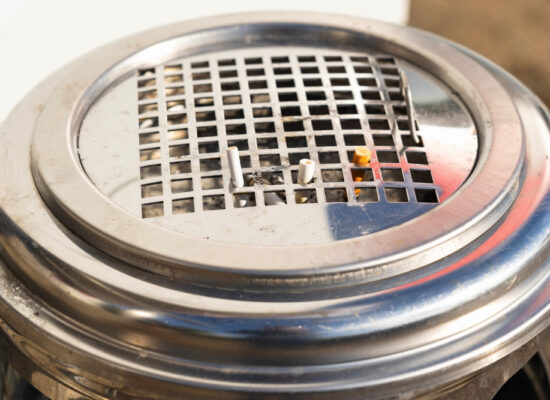
© Arbemu. All rights reserved